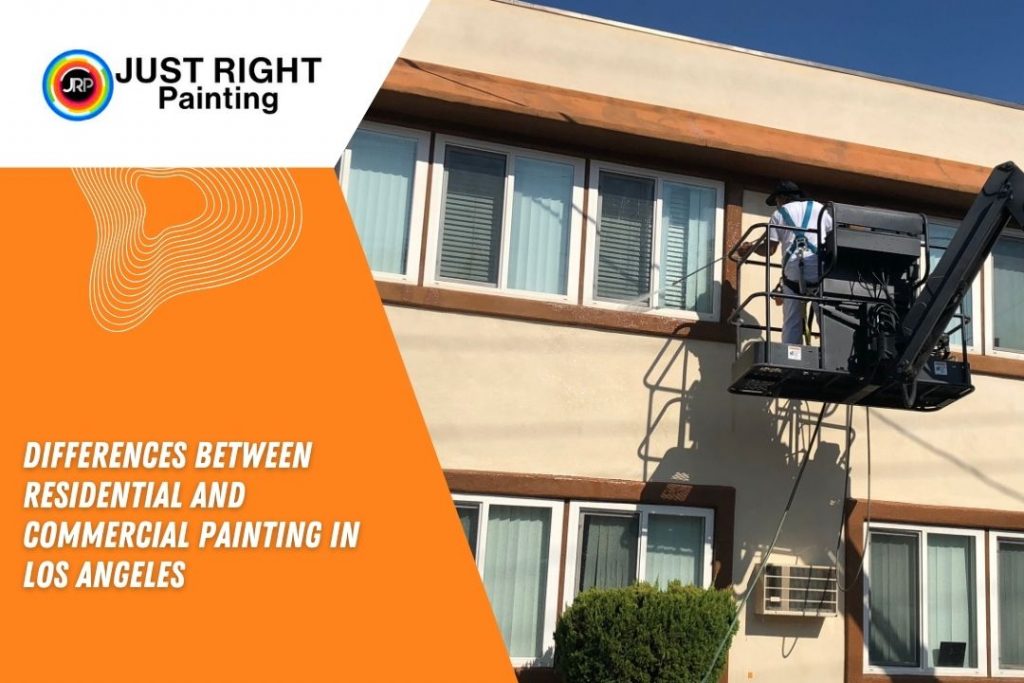In the diverse field of painting, residential and commercial projects stand out as distinct entities, each with their own sets of considerations and challenges. While both share the fundamental principles of paint application, they do diverge significantly in scale, purpose, materials, and execution. Let’s take a closer look at the key differences between residential and commercial painting in Los Angeles.
Comparing Residential and Commercial Painting in Los Angeles: Key Differences
Surface Area And Size
One of the most notable differences between residential and commercial painting in Loss Angeles is the size of the job. Residential painting typically revolves around individual homes, apartments, or small complexes, where the surface area is limited to the confines of personal living spaces. On the other hand, commercial painting involves vast expanses, including office buildings, retail establishments, and industrial facilities, requiring painters to tackle extensive surface areas and heights.
Paint Selection And Materials
Residential projects often feature a diverse range of paint colors and finishes, catering to individual tastes and interior design preferences. More eco friendly paints are commonly preferred for residential applications to promote indoor air quality and minimize environmental impact. Commercial settings demand durable, high performance coatings capable of withstanding heavy foot traffic, frequent cleaning, and exposure to harsh environmental conditions.
Process And Preparation
The preparation process for residential painting typically involves surface cleaning, minor repairs, and application of primer before the final coats of paint. While attention to detail is key, the scale of preparation work is generally more manageable compared to commercial projects. Commercial painting, on the other hand, requires meticulous surface preparation, including extensive cleaning, repairing structural damage, and addressing any safety hazards. Coordination with other tradesmen is often required to ensure a smooth and efficient workflow.
Technique And Equipment
Residential painters use a range of techniques using brushes, rollers, and sprayers to achieve desired finishes and textures while focusing on intricate details and precision. In contrast, commercial painters utilize larger scale equipment such as airless sprayers, scaffolding, and lifts to tackle expansive surfaces efficiently. Specialized techniques may be used for specific applications, such as electrostatic painting or powder coating, depending on the requirements of the project.
Schedule And Time Frame
Residential painting projects typically offer more flexibility in scheduling, allowing homeowners to coordinate the work around their availability and preferences. Alternatively, commercial painting projects often operate within strict timelines dictated by business operations, seasonal considerations, or contractual obligations. Timely completion is essential to minimize disruptions to daily activities and ensure minimal downtime for commercial establishments.
Compliance And Regulation
Compliance with building codes, safety regulations, and environmental standards is crucial for both residential and commercial painting projects. However, commercial painting involves additional compliance requirements due to the public nature of the spaces involved. Painters must adhere to stringent safety protocols, accessibility standards, and environmental regulations to ensure legal compliance and minimize liability risks.
So, if you are looking for a firm to handle your commercial painting in Los Angeles, then don’t hesitate to contact Just Right Painting. Get in touch with a member of our experienced team and they will be able to make the right recommendations for you based on your specific painting requirements. We look forward to hearing from you!

